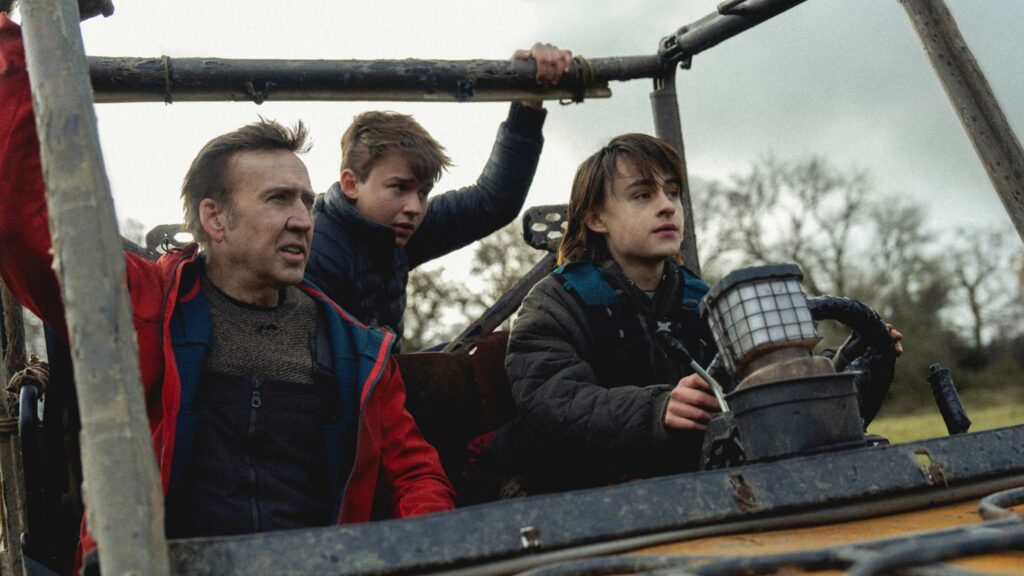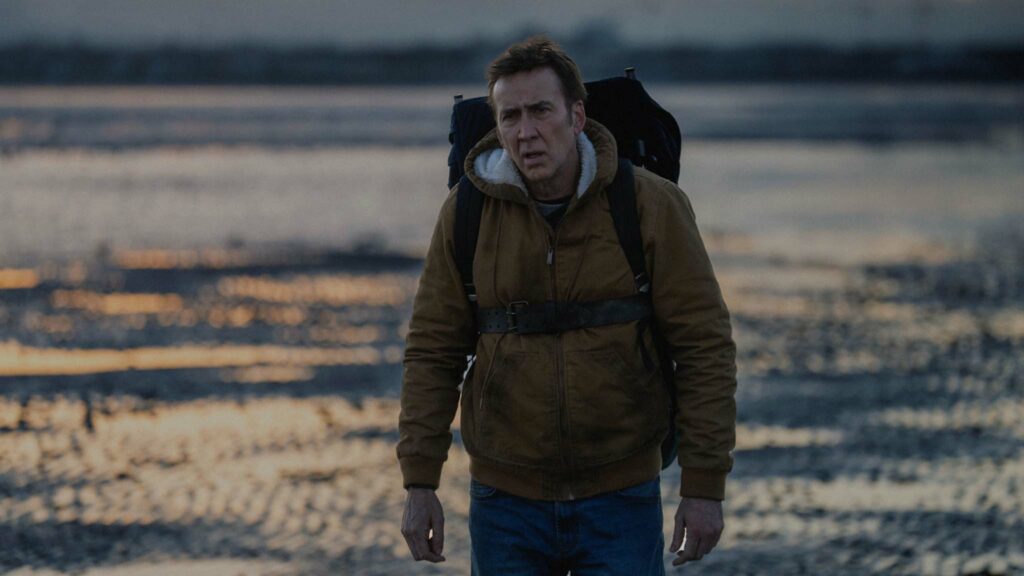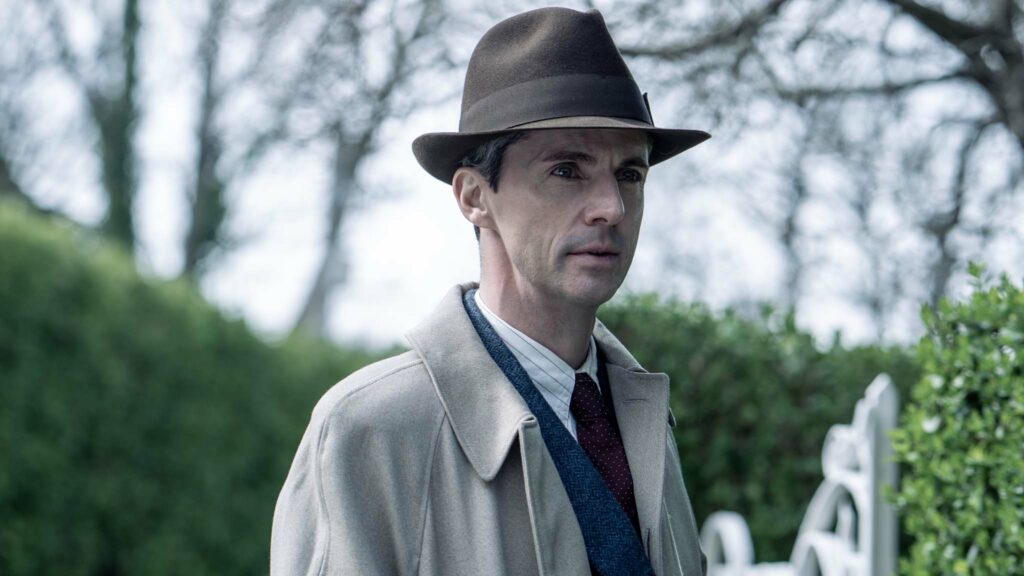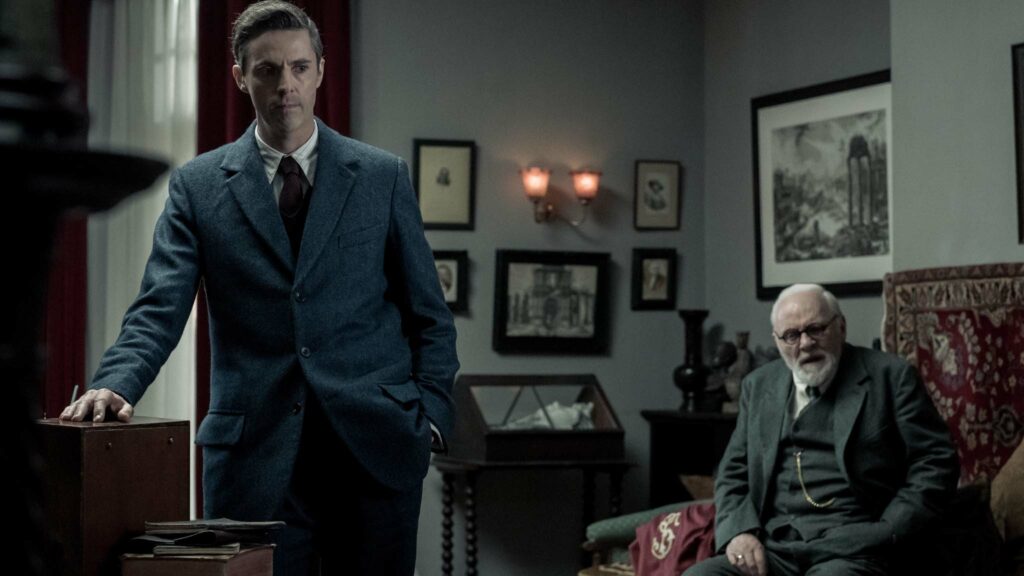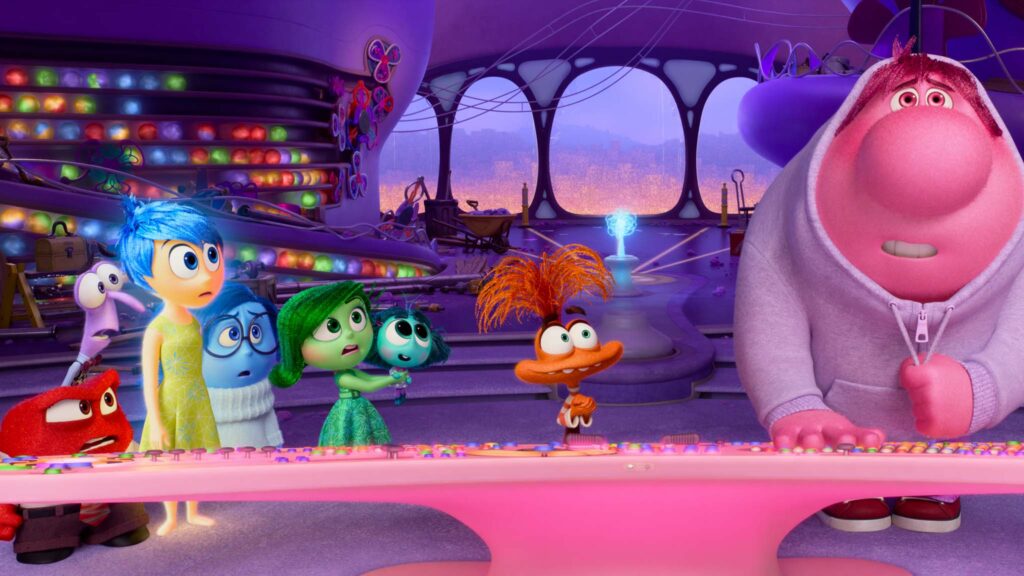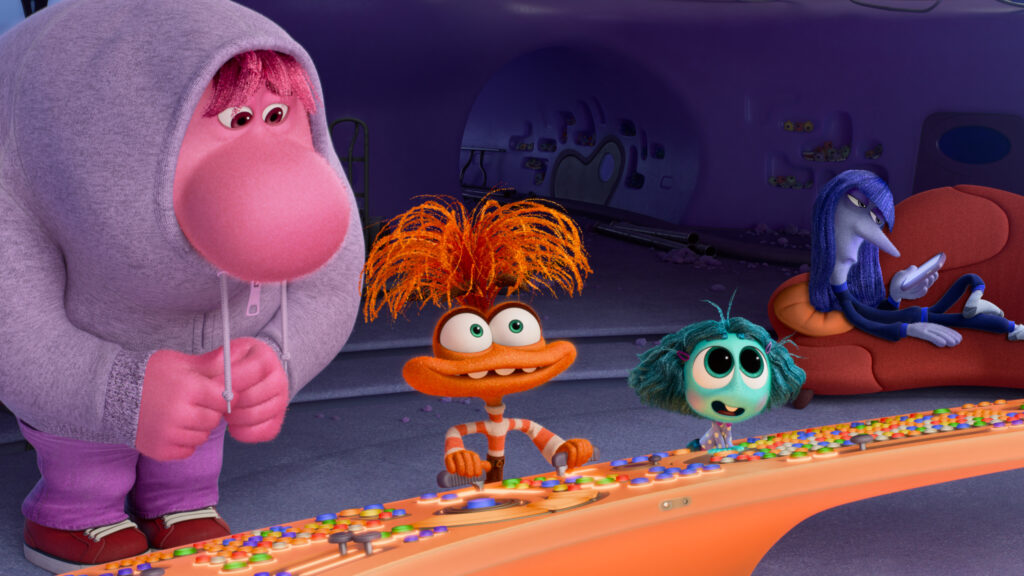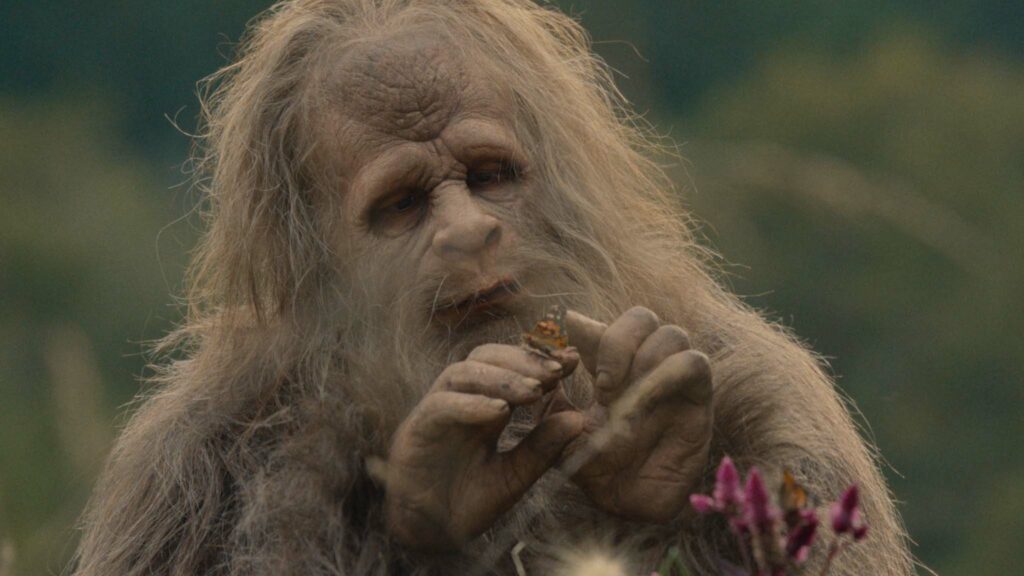Sci-Fi
Arcadian (15)
Review: Conceived by screenwriter Michael Nilon during the pandemic, Arcadian is a post-apocalyptic survival thriller that imagines a deadly virus knocking humans off their pedestals, eventually giving birth to gnarled, nocturnal beasts that hunt our ravaged species under a cloak of darkness. Director Benjamin Brewer’s picture unfolds through the eyes of a stricken, close-knit family rallying together against the otherworldly predators from a fortified farmhouse stronghold.
The claustrophobic set-up is eerily reminiscent of the 2017 psychological horror It Comes At Night starring Joel Edgerton and climactic scenes in A Quiet Place. However, Brewer stages his slick set-pieces with the volume turned up and suspense dialled down to tolerable. Creature design is original, melding cartoonish and grotesque elements with staccato bursts of sound created when the beasts rapidly clack their jaws before they coalesce into a giant wheel and roll en masse after fugitive prey.
A creepy centrepiece involving one digitally rendered interloper relies too heavily on crazy good fortune to withstand scrutiny of logic and plausibility. Nicolas Cage’s performances are usually the craziest element on screen but in Arcadian, the Oscar winner is surprisingly understated and effective as a father willing to sacrifice everything to protect his offspring. He allows young co-stars Jaeden Martell and Maxwell Jenkins to shine although the script lumbers cast with occasionally clunky dialogue.
Resourceful father Paul (Cage) and twin teenage sons Joseph (Martell) and Thomas (Jenkins) seek refuge in their isolated farmhouse each night from the otherworldly beasts that hunt human prey. Before the sun sets, the family checks windows, security bars and homemade barricades to prevent the creatures from invading their modest sanctum. During daylight, Paul and Joseph sporadically salvage shoreline scrap but they don’t stray far from the farm.
Meanwhile Thomas happily spends hours on a neighbouring estate run by Mr and Mrs Rose (Joe Dixon, Samantha Coughlan) whose daughter Charlotte (Sadie Soverall) has caught his eye. Joseph is frustrated by his brother’s eagerness to spend precious time away from home but Paul argues that you can’t tame an adventurous spirit or raging hormones. An impromptu visit to the Rose farm strands Thomas far from home in territory inhabited by the bloodthirsty beasts and Paul faces an agonising choice between his two sons, who he has protected since they were helpless, mewling infants.
Filmed on location in Ireland, Arcadian doesn’t reveal the creatures in full until we’re well into the opening hour. From that point, Brewer rapidly escalates the bloodshed, shooting predominantly on twitchy, handheld cameras to stay close to the characters. Unfortunately, that stylistic choice reduces some fight sequences to an unintelligible blur. Aching inevitability of a final stand diminishes any deliberate plucking of heartstrings to a tickle.
Find Arcadian in the cinemas
Drama
Freud's Last Session (12A)
Review: In 1939, shortly before his death in Hampstead, London after a painful battle with cancer of the jaw, psychoanalyst Sigmund Freud reportedly met with a don from the University of Oxford. No one knows if that academic was author CS Lewis but playwright Mark St Germain imagined a meeting of these two brilliant minds in his award-winning stage work, Freud’s Last Session. A stuffy fand thoughtful film adaptation, co-written by St Germain and director Matthew Brown, still feels inherently theatrical, unfolding predominantly as conversations about faith, sexuality and human frailty in drawing rooms and offices.
As played by Sir Anthony Hopkins, Freud is abundantly aware that he is a walking contradiction, especially when it comes to his views on the sexes. “I’m human. I’m inherently flawed, and I’m deeply damaged,” he notes. “And no doubt, I’m damaging to others.” Hopkins savours the meaty dialogue and shares each morsel with a movingly understated Matthew Goode as Lewis. There is plenty here to fire synapses, engage the brain and provoke debate, especially with scenes that depict Freud’s unwillingness to formally acknowledge a relationship between his daughter Anna and Tiffany heiress Dorothy Burlingham. Emotional muscles aren’t flexed quite so forcefully and Brown’s picture feels standoffish for periods.
On September 3, 1939, the day that prime minister Neville Chamberlain formally announces Britain is at war with Germany, 83-year-old Sigmund Freud (Hopkins) invites CS Lewis (Goode) to visit him at home so they might discuss ideas expressed in the latter’s book, The Pilgrim’s Regress. The novel is an allegorical response to John Bunyan’s 17th-century work The Pilgrim’s Progress and has been published after Lewis converted to Christianity.
The writer travels from his country home in Oxford, which he shares with companion Janie Moore (Orla Brady), into the capital where barrage balloons are already inflated to protect from airborne attacks. “I always find it most convenient to be warned before being bombed or shot,” deadpans Freud. The men’s discussion ebbs and flows between different topics, interrupted by an air raid siren that requires the two men to seek shelter in the basement of a nearby church. Lewis suffers a panic attack, post-traumatic stress from the Somme, and Freud tenderly eases the situation. “Focus on me,” he soothingly instructs. Meanwhile, Freud’s 43-year-old daughter Anna (Liv Lisa Fries) abandons her lecturing duties to seek morphine for her father.
Freud’s Last Session is distinguished by the verbal sparring between Hopkins and Goode, speckled with tender reminiscences including Lewis’s fraternal bond with JRR Tolkien (Stephen Campbell Moore), who has already published The Hobbit. Stately production design conveys the return of conflict to Europe and stiff-upper-lipped resolve on British shores. Forays outside of Freud’s inner sanctum allow for welcome directorial flourishes to sporadically distance the film from its stage counterpart.
Find Freud's Last Session in the cinemas
Animation
Inside Out 2 (U)
Review: My adolescent years would have been a lot more bearable if I had been able to watch Inside Out 2 when I was in the throes of teenage anxiety. Riley, the protagonist in Pixar’s 2015 film Inside Out, returns for its sequel as a 13-year-old on the brink of puberty, and we watch as her existing Emotions – Joy, Sadness, Anger, Fear and Disgust – get usurped by four new, more complex feelings that wreak havoc on Headquarters.
Anxiety, played by Stranger Things’ Maya Hawke, becomes the star of the show – her toothy grin, zany hair and wild eyes wonderfully animated as an eerily accurate physical manifestation of the emotion. She’s joined by Envy, played by The Bear’s Ayo Edebiri, Embarrassment, played by Black Bird’s Paul Walter Hauser, and Ennui, played by Blue Is The Warmest Colour star Adèle Exarchopoulos, and together they banish Riley’s childhood Emotions and take control, believing they’re doing what’s best to keep her straight on the rocky road ahead.
Young fans of Inside Out, now almost a decade older, will be similarly dealing with the complicated emotions that teenagehood brings, and the expansion of the world of Riley’s mind to include all the new feelings of adolescence is a brilliant way to continue the story. The inclusion of new emotions makes the story more nuanced without sacrificing charm, and never pokes fun at Riley and her teenage confusion.
Instead, it’s a respectful and relatable exploration of puberty’s psychological impact with some cracking jokes to boot, complete with the adventurous scale of animation that makes Pixar so beloved. It’s colourful, glowing and warm. The entire film drips with charisma, immediately hooking you into its premise and keeping your attention with its glorious colours and charming characters. Inside Out 2 is a fantastic example of how to do a sequel.
Find Inside Out 2 in the cinemas
Comedy
Sasquatch Sunset (15)
Review: Sir David Attenborough has been the soothing voice of the natural history world for decades, introducing generations of viewers to the majesty of our blue planet and various species that exist in uneasy harmony with our self-absorbed and destructive species. The veteran broadcaster has witnessed many extraordinary sights on land, in the sea and the air but it’s unlikely he will have ever seen a tribe of bigfoots urinating, lactating and defecating with wild delirium to mark their territory.
Bodily fluids overflow in filmmaking brothers David and Nathan Zellner’s hypnotic hike through the mist-cloaked forests of North America in the company of a ragtag tribe of human-like creatures. These hirsute wanderers, portrayed by Jesse Eisenberg, Riley Keough, Christophe Zajac-Denek and Nathan Zellner clad in full-body foam latex suits fashioned by creature and prosthetics designer Steve Newburn, are initially untouched by the so-called developed world. They graze contentedly on vegetation and bugs in wide open plains, lovingly comb fingers through each other’s fur to remove ticks and enthusiastically throw large stones into a river to catch an unfortunate fish.
Over the course of four seasons, lovingly captured by cinematographer Mike Gioulakis as if this were a documentary, a mated couple (Eisenberg, Keough), an elder male (Zellner) and an energetic youngster (Zajac-Denek) contend with a predatory mountain lion, potentially poisonous mushrooms and the ferocity of the elements. In amusing vignettes, one bigfoot gets high by sniffing the fur of a skunk while another creates an imaginary friend from his balled-up fist.
Gentle laughs are frequently undercut by stunned silence. Death comes quickly and matter-of-factly. Grunts, whoops and guttural roars replace intelligible lines of dialogue but it’s easy to discern the bigfoots’ emotions from their actions like when they beat the trunks of redwood trees in unison to make contact with similar communities. The sadness is palpable when the rhythmic calls go unanswered.
Austin-based experimental three-piece The Octopus Project, who have frequently collaborated with the Zellners, deliver an impressive and soaring score that combines cello, flute and synths with percussive field recordings taken during the pre-production process. A euphoric burst of synth-pop duo Erasure’s 1991 hit Love To Hate You soundtracks one scene and elicits a strong reaction.
Expanded from the brothers’ 2011 short Sasquatch Birth Journal 2, which depicts (rather vividly) a female bigfoot bringing new life into the world in a woodland setting, Sasquatch Sunset is a curiously compelling oddity. Minutiae of animal life can be a little repetitive but changing seasonal palettes and the influence of unseen humans feed the fascination. Exemplary prosthetics and make up allow the cast to vanish beneath pungent pelts matted with every conceivable excretion. Answering the call of the wild is exceedingly messy.
Find Sasquatch Sunset in the cinemas


